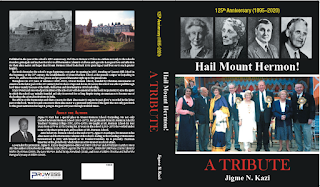STEPPING OUT TO SET THINGS RIGHT
For the true Sikkimese, May 16, 1975 heralded the end of an era and perhaps the beginning of a new struggle to preserve ‘Sikkim for Sikkimese’; but, this time, within the bounds of India, a great nation ruled by petty politicians and corrupt bureaucrats. This was an ideal that inspired me and shaped the course of my life ever since I returned to my native land at the end of 1982 after nearly twenty years.
To aim high, think big and struggle for a worthy cause – for unity, identity and a common destiny for all people in Sikkim – was the agenda that I had set for myself both in my profession and later on in politics. Anything less than that was totally unacceptable to me and not worth the risk, toil and the endless struggle that lasted for more than two decades.
By the end of 1999 – the last year of the 20th century – I felt a certain sense of restlessness and impatience that I hadn’t experienced before. I needed and wanted to step out of the narrow confines of my profession and free myself to openly and directly place my views to the outside world on certain issues of public interest which were close to my heart and which guided my professional and political outlook for a long, long time.
Journalism does not allow you to mingle personal feelings and political inclinations with professional duties. The respect that I had for my profession had one disadvantage – it became a wall between me and my people. While freeing me in some ways it also enslaved me. I could not remain in the cage any longer – I needed and wanted to come out and set myself free. I could not and would not allow my precious dream to die in the hands of petty politicians without getting personally and politically involved in the struggle towards achieving my goals.
Even if I face defeat my effort and struggle to pursue my dream would be worthwhile. I will not feel guilty of playing it safe and shying away in my neat little corner when the ideal thing to do was to come out in the open and take your stand - come what may! Those who knew me well, respected me, and had great faith and trust in my capacity and commitment had no doubt about the honesty of my heart and the righteousness of my cause that drove me to place my case to the outside world.
It was US President Theodore Roosevelt who once said: “The credit belongs to the man who is actually in the arena - whose face is marred by dust and sweat and blood...who knows the great enthusiams, the great devotions - and spends himself in a worthy cause - who at best if he wins knows the thrill of high achievement - and if he fails at least fails while daring greatly - so that his place shall never be with those cold and timid souls who know neither victory or defeat.”
In the autumn of 1999 I found myself in direct confrontation with the political establishment on issues that were close to my heart for a long time. You either take a stand and live out your dream or just talk about it, write about it but actually do nothing about it and spend the rest of your days regretting for not having spoken up and making your stand clear to the whole wide world. The fact is you are what you do and not what you want to do. The road to hell is certainly paved with good intentions. Our leaders who preach and do not practise should know where we are heading.
In mid-September 1999, I, as the Chairman of the Organisation of Sikkimese Unity (OSU), supported a call for boycotting the ensuing Assembly elections in the State, scheduled for October 3, 1999. Though I had written about it earlier we actually did not make any plan to take such a radical step on the Assembly seat reservation issue. It just happened – quite spontaneously and to my great delight! The boycott call given by the Sikkim Bhutia-Lepcha Apex Committee (SIBLAC) – the apex body of the indigenous Bhutia-Lepchas in the State – was in reaction to the betrayal of people’s trust by the combined political leadership of the State and the Centre on the Assembly seat issue.
The 1999 Assembly polls was the fifth Assembly elections in Sikkim since the arbitrary, undemocratic, unjust and abrupt abolition of Assembly seats reserved for the three ethnic communities in 1979. Not only were the political parties in the State fooling the people on the seat issue the Centre also refused to respond favourably and timely on the demand for restoration of the political rights of the Sikkimese people as per assurances given to them during the merger, which are reflected in the historic Tripartite Agreement of May 8, 1973 and Article 371F of the Constitution.
(Ref: The Lone Warrior: Exiled In My Homeland, Jigme N. Kazi, Hill Media Publications, 2014.)























.jpg)





.jpg)

.jpg)













.jpg)
.jpg)
.jpg)


